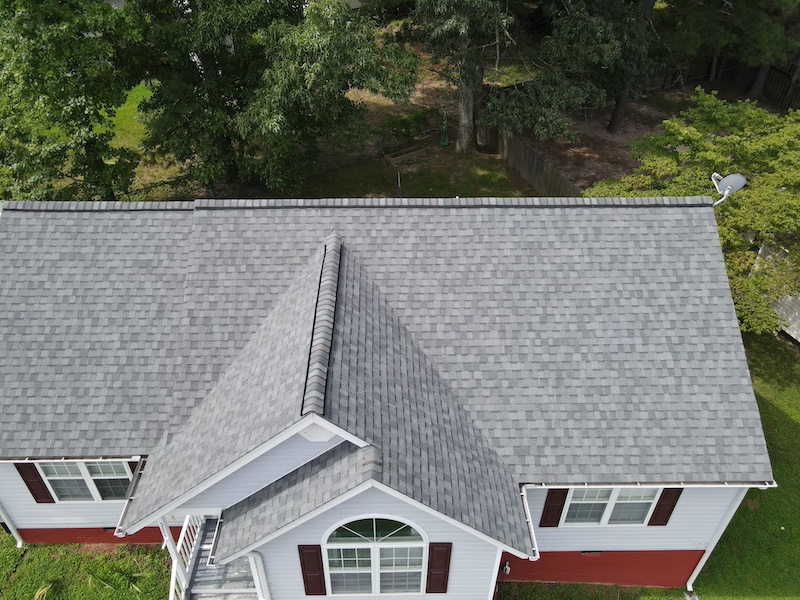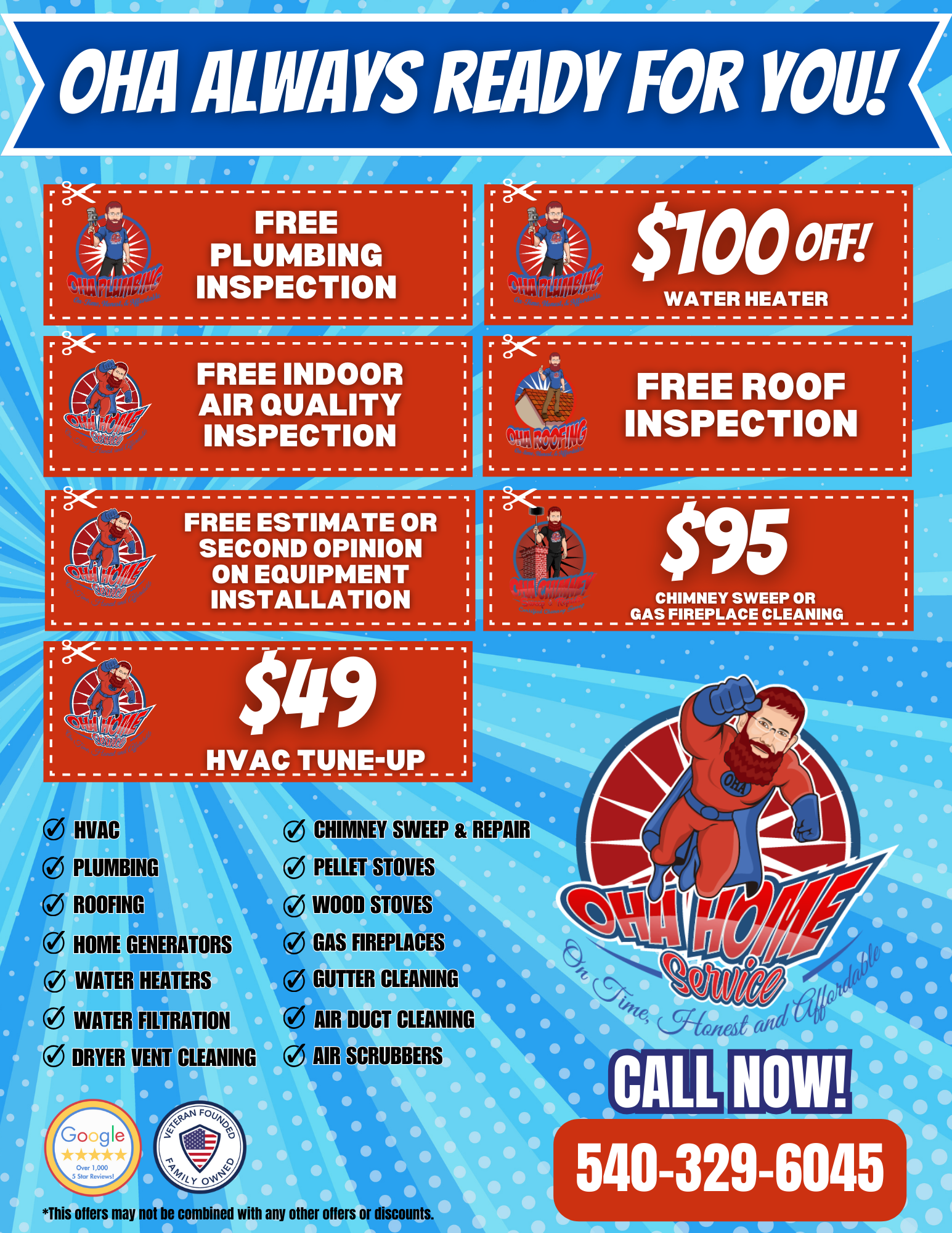As winter approaches, it’s crucial to turn our attention to the condition of our roofs. This is the moment to ponder, “Is my roof equipped to handle the harsh winter weather?” Ensuring your roof is winter-ready goes beyond a mere seasonal checklist; it’s a fundamental aspect of home maintenance. Preparing your roof for the frosty months involves more than just a cursory glance; it requires a detailed inspection and potential roof repairs. This is not only about avoiding the inconvenience of leaks or damage during the coldest days but also about ensuring the longevity and efficiency of your roofing. Effective roof repair and proactive preparation can dramatically increase your home’s resilience against snow, ice, and freezing temperatures, providing you with peace of mind and the assurance that your home remains snug and dry. By exploring and implementing the best roof repair strategies now, you can prevent minor issues from escalating into major problems when winter sets in. Let’s dive into how you can safeguard your home with timely and efficient roof repair and maintenance, ensuring a warm and dry environment throughout the winter season.
Understanding Winter Roof Challenges
Winter presents a unique set of challenges that can test the resilience of any roof. The cold season is notorious for creating conditions that can quickly escalate into serious problems if left unaddressed. One of the most common issues faced during winter is the formation of ice dams. These occur when heat from the attic causes snow on the roof to melt, and the water then refreezes at the roof’s edges. This ice build-up can create blockages, preventing proper drainage and potentially leading to water seeping under the shingles and into the home.
Heavy snow accumulation is another significant concern. The snow’s weight can strain a roof’s structural integrity, especially if there are pre-existing vulnerabilities. This added pressure can cause sagging or, in extreme cases, collapse, especially in older buildings or those not designed to withstand heavy snow loads.
Additionally, fluctuating temperatures can lead to a freeze-thaw cycle, accelerating wear and tear on roofing materials. As temperatures oscillate, roofing materials expand and contract, leading to cracking and splitting, especially in older roofs. This constant change can weaken the roof’s structure and make it more susceptible to damage.
Furthermore, strong winter winds can loosen or tear off shingles, exposing the roof deck and underlayment to the elements. This exposure can significantly increase the risk of leaks and structural damage.
Understanding these winter-specific challenges is crucial in planning effective roof repair and maintenance strategies. Regular inspections and timely interventions can help identify potential problem areas and address them before they escalate into more significant, costly repairs. By being aware of what winter can do to your roof, you’re taking an essential first step in ensuring your roof remains in optimal condition throughout the colder months. This proactive approach is about immediate repairs and safeguarding the longevity and overall health of your roofing system.
Inspection: The First Step to Winter Readiness
Initiating your winter preparation with a thorough roof inspection is critical in averting potential issues during the cold season. This proactive measure is not just a routine check-up; it’s an essential practice in maintaining the health and longevity of your roof. The inspection should be comprehensive, covering all aspects of the roof’s condition.
Start by looking for obvious signs of wear and tear. Cracked or missing shingles indicate that your roof may be vulnerable to winter weather. These defects can allow water and snow to penetrate the roof, leading to more significant problems like leaks or structural damage. Pay special attention to areas with heavy wear or where previous repairs have been made, as these are often the first to fail.
Damaged flashing is another critical concern. Flashing, typically made of metal, is used to seal and protect the joints and edges of the roof, especially around chimneys, vents, and skylights. If the flashing is bent, rusted, or broken, water can seep into the roof, causing damage to interior structures.
Clogged gutters are also a significant issue. Gutters are vital in directing water away from your roof and home. When they are blocked with debris such as leaves and twigs, water can back up and potentially seep under your roof shingles or freeze, contributing to ice dam formation. Ensuring that gutters are clean and clear is integral to roof maintenance.
Inspecting the interior of your home, especially the attic, is just as important. Look for signs of water intrusion, like stains or mold on the underside of the roof or around the attic. These signs can indicate leaks that might not be visible from the outside. Also, assess the insulation and ventilation in the attic. Proper insulation and ventilation prevent heat from escaping through the roof, reducing the chance of ice dam formation.
It’s important to remember that some roof problems may not be visible to the untrained eye. Therefore, if you need more clarification about your roof’s condition or are uncomfortable performing the inspection yourself, it’s advisable to enlist the services of a professional roofing contractor. They can provide a more detailed inspection and offer expert advice on any necessary roof repairs. By ensuring your roof is thoroughly inspected before winter, you’re taking a crucial step in preventing minor issues from escalating into major, costly repairs when the harsh weather hits.
Preventative Measures for Winter Roof Care
When it comes to maintaining your roof during the winter, prevention is key. Taking proactive steps can significantly reduce the risk of damage and extend the life of your roof. Let’s delve into effective preventative measures to ensure your roof remains in top condition through the colder months.
A crucial aspect of winter roof care is managing ice dams. Ice dams form when heat from the attic melts the snow on your roof, and this water refreezes at the roof’s edge. To prevent this, proper attic insulation is essential. Good insulation keeps the warmth inside your home, preventing it from reaching the roof and melting the snow. This helps prevent ice dams and enhances energy efficiency in your home, potentially lowering heating costs.
Equally important is ensuring your attic has adequate ventilation. Proper ventilation allows cold air to circulate under the roof, helping to maintain an even temperature. This prevents hot spots on the roof that can lead to uneven snow melting and ice dam formation. Regularly check your attic vents to make sure they are not blocked by insulation or debris.
Another critical preventive measure is keeping your gutters clean. During fall and early winter, gutters can become clogged with leaves, twigs, and other debris. These blockages can lead to water backing up and spilling over the edge of the gutter, where it can freeze and contribute to ice dam formation. Clean your gutters before winter sets in and regularly throughout the season, especially after heavy winds and storms. This not only prevents water damage and ice dams but also protects the structural integrity of the gutters themselves.
Additionally, consider installing gutter guards to reduce the amount of debris in your gutters. These can be a worthwhile investment, especially in areas with heavy tree coverage.
A roof rake can be a valuable tool for those living in regions with heavy snowfall. After significant snowfall, use the rake to remove snow from the edges of your roof safely. This reduces the weight and stress on your roof and minimizes the likelihood of ice dam formation.
Lastly, inspect your roof for any signs of damage or wear before the onset of winter. Replace missing or damaged shingles and repair any issues with the flashing. These repairs can prevent water and snow from penetrating the roof structure, averting potential damage.
Implementing these preventative measures can significantly reduce the likelihood of winter-related roof problems. Regular maintenance and proactive care are essential for keeping your roof in good condition, ensuring it can withstand the rigors of winter weather. Remember, the cost of prevention is often far less than the cost of repair, so taking these steps now can save you time and money in the long run.
Emergency Repairs: Handling Winter Roof Damage
Winter can be unforgiving on roofs, and sometimes, despite our best efforts, damage occurs. When faced with such emergencies, swift and effective action is critical. Dealing with roof damage promptly can prevent minor issues from escalating into major problems that could compromise the safety and comfort of your home.
If you discover that winter weather has damaged your roof, the first step is to assess the extent of the damage safely. This can include anything from a few loose shingles to a significant leak. Remember, safety is paramount; if the damage is extensive or if accessing your roof is dangerous, it’s best to call in professionals.
Products like roof tape or patching kits can be lifesavers for immediate temporary fixes. These solutions are designed to quickly seal minor leaks or damaged areas, preventing water from entering your home. However, it’s crucial to understand that these are just temporary measures. They are not meant to replace proper, long-term repairs but rather to provide a short-term solution until more comprehensive work can be done.
When the weather conditions improve, addressing these temporary fixes with permanent solutions is essential. This might involve replacing shingles, repairing flashing, or even more extensive work, depending on the severity of the damage. Delaying these repairs can lead to further deterioration of the roof and potentially more extensive and expensive repairs in the future.
It’s also advisable to schedule a professional roof inspection after significant weather events, even if no visible damage is apparent. Sometimes, winter damage isn’t immediately obvious, and a professional can identify issues that might go unnoticed by an untrained eye. This thorough inspection ensures that your roof’s health is evaluated and addressed.
Moreover, keep in mind the importance of proper documentation, especially if you plan to file an insurance claim. Take photos of the damage and record any repair work, including receipts. This documentation can support your claim and ensure you receive the appropriate compensation.
In summary, dealing with emergency roof repairs in winter requires quick action, but it also demands a thoughtful approach. Temporary fixes can mitigate immediate damage but should be followed up with professional assessment and permanent repairs. By addressing winter roof damage promptly and effectively, you can ensure the longevity and integrity of your roof, protecting your home from future weather-related challenges.
Choosing the Right Materials for Winter Roof Repair
In roof repair, especially during the winter months, selecting appropriate materials is not just a matter of choice but of necessity. The materials you choose must be capable of withstanding the unique challenges posed by cold, moisture, and the overall harshness of winter weather.
Weather-Resistant Shingles: The cornerstone of any roof repair in winter is the shingles. Opt for weather-resistant shingles specifically designed to endure the rigors of cold weather. These shingles are made with advanced materials that resist cracking in cold temperatures and maintain their integrity under freezing and thawing cycles. Look for shingles with a high wind rating as well, as winter storms can bring about strong winds that test the limits of your roof’s durability.
High-Quality Sealants: Sealants play a crucial role in keeping your roof watertight. During winter repairs, it’s important to use flexible sealants even in low temperatures, allowing for the natural expansion and contraction of roofing materials without cracking. These specialized sealants provide a durable, waterproof barrier that keeps moisture out and warmth in, a key factor in maintaining the overall health of your roof during winter.
Durable Flashing: Flashing is essential for directing water away from critical areas of your roof, like chimneys, valleys, and vents. In winter, using flashing materials that can withstand severe weather conditions is vital. Materials such as copper, aluminium, and galvanized steel offer longevity and resistance to corrosion caused by snow and ice. Proper flashing installation is just as important as the material itself to ensure that it effectively protects against water penetration.
Insulation and Ventilation Materials: Adequate insulation and ventilation are paramount in preventing heat loss and regulating temperature on your roof. This balance helps in minimizing the formation of ice dams. Ensure that your attic is well-insulated and that ventilation systems are clear and functional. This not only aids in protecting your roof but also contributes to energy efficiency within your home.
Gutter and Downspout Considerations: Your gutters and downspouts should be capable of handling the increased load during winter, particularly from snow and ice. Heavy-duty materials and a robust design are crucial to prevent sagging and breakage. Additionally, consider installing gutter guards to minimize the accumulation of ice and debris, ensuring that melting snow can flow freely.
Underlayment Selection: Underlayment acts as a secondary barrier against moisture and should be chosen carefully. Synthetic underlayments, for instance, offer superior water resistance and durability, which is particularly beneficial in harsh winter conditions. They also provide an added layer of insulation, contributing to the overall thermal efficiency of your home.
Choosing the right materials for winter roof repair is a critical decision that impacts the longevity and effectiveness of your repairs. Weather-resistant shingles, high-quality sealants, durable flashing, proper insulation, and robust gutter systems are all integral components of a winter-ready roof. By selecting materials specifically designed to withstand the rigors of winter, you ensure that your roof remains strong and secure throughout the season, safeguarding your home against the elements.
Professional vs. DIY: Making the Right Choice in Roof Repair
When it comes to roof repair, especially in demanding winter conditions, understanding the boundary between what you can safely handle as a DIY project and what requires professional intervention is crucial. This decision is not just about skill level or cost efficiency; it’s primarily about safety and the long-term integrity of your roof.
DIY Roof Repair: For handy people with some experience with home repairs, tackling minor roof issues might be feasible. This could include replacing a few damaged shingles, clearing gutter debris, or applying sealant to small leaks. However, even these seemingly simple tasks come with risks, particularly when working at height in potentially icy or windy conditions. If you decide to go the DIY route, prioritize safety: use a sturdy ladder, wear non-slip shoes, and never work on the roof alone. Ensure you have the right tools and materials, and always adhere to the manufacturer’s instructions.
Professional Roof Repair: Calling in professionals is often the best course of action, especially when dealing with more complex or extensive roof damage. Professional roofers bring a wealth of experience, the right tools, and an understanding of how to navigate a roof, even in adverse weather conditions safely. They can accurately assess the extent of damage, recommend the best course of action, and ensure repairs are carried out to a high standard. Professional repairs often come with warranties, providing added assurance and protection.
Professionals are also well-versed in local building codes and regulations. This is critical because any roof repair or modification must comply with these standards. Non-compliance can lead to problems, especially if you plan to sell your home.
Another factor to consider is the complexity of the damage. Winter roof problems can sometimes be more severe than they appear. Issues like structural damage, extensive water leakage, or ice dam formation require expertise and equipment beyond the scope of most DIY enthusiasts. In such cases, both the knowledge and experience of professionals are indispensable.
While DIY roof repair can be tempting for minor issues, knowing your limits is essential. Safety should always be your top priority. For anything beyond basic repairs, or if you’re unsure about the extent of the damage, it’s best to call in professional roofers. They can ensure that the job is done right, safely, and in compliance with all relevant regulations, thereby protecting your home and investment.

Long-Term Solutions: Preparing for Future Winters
Adopting a forward-thinking approach towards roof maintenance is key to minimizing winter-related damages and ensuring the longevity of your roofing system. Regular maintenance and annual inspections are pivotal in identifying and addressing small problems before they escalate into major concerns. These preventative measures involve thoroughly examining your roof’s condition, including checking for missing or damaged shingles, ensuring flashing is intact and secure, and verifying that gutters and downspouts are clear and functioning properly. It’s also essential to inspect the attic for signs of leaks, proper insulation, and adequate ventilation, as these factors are crucial in preventing ice dams and other cold weather complications. Additionally, trimming overhanging tree branches can reduce debris accumulation and potential damage. By dealing with these issues promptly, you not only extend the life of your roof but also avoid the inconvenience and expense of major repairs. Furthermore, a well-maintained roof contributes to the overall energy efficiency of your home, keeping heating costs in check. Engaging a professional roofing contractor for these inspections and maintenance tasks ensures that any problems are expertly evaluated and resolved, providing peace of mind and a secure, well-protected home for all future winters. This proactive strategy is about repair and maintaining a robust and resilient roof that can withstand the challenges of harsh winter weather.
Cost Considerations: Budgeting for Winter Roof Repair
Navigating the financial aspect of winter roof repair requires a balanced approach that weighs both cost and quality. While it’s true that roof repair expenses can fluctuate significantly based on the extent of damage and the materials used, prioritizing low cost over quality can be a false economy. High-quality repairs, though potentially more expensive upfront, tend to offer greater durability and longevity, thus averting frequent and potentially more costly repairs in the future. It’s essential to plan your budget with a long-term perspective, considering not just the immediate expense but also the future savings from preventing further damage. Seeking estimates from reputable professionals and comparing them can provide a clearer picture of the expected costs.
Additionally, it’s worth exploring warranty options and potential insurance coverage, as these can offset some expenses. Remember, investing in proficient roof repair is not merely a financial decision; it’s an investment in the safety and integrity of your home, which is invaluable. By thoughtfully planning your budget and valuing the quality of work, you ensure a more resilient and reliable roof that stands the test of time, especially during the demanding winter months.
In conclusion, your roof stands as the primary shield, safeguarding your home from the rigors of winter. Proactively preparing and repairing it today can spare you significant troubles in the future. Recognizing the power of regular maintenance, even minimal efforts can yield substantial benefits. Investing time and attention into your roof now ensures its strength and integrity, providing peace of mind and security as you navigate the colder months. Remember, the care you give to your roof is an investment in your home’s overall well-being, making these steps beneficial and essential.
Schedule Your Roof Repair with OHA HVAC, Plumbing, Roofing, Chimney & Fireplaces – Quality and Reliability Guaranteed
Get your roof winter-ready with OHA HVAC, Plumbing, Roofing, Chimney & Fireplaces, the veteran-owned, trusted choice for roof repair and maintenance. We value your time with our on-time service, guarantee transparent pricing with no hidden fees, and prioritize your satisfaction with our 100% customer happiness commitment. Offering financing options for all credit types and only employing thoroughly background-checked technicians, we’re ready to complete your job on the first visit efficiently*. With over 1,000 Google 5 Star Reviews, trust us for top-notch service. Visit OHA Roofing to schedule your appointment today!











